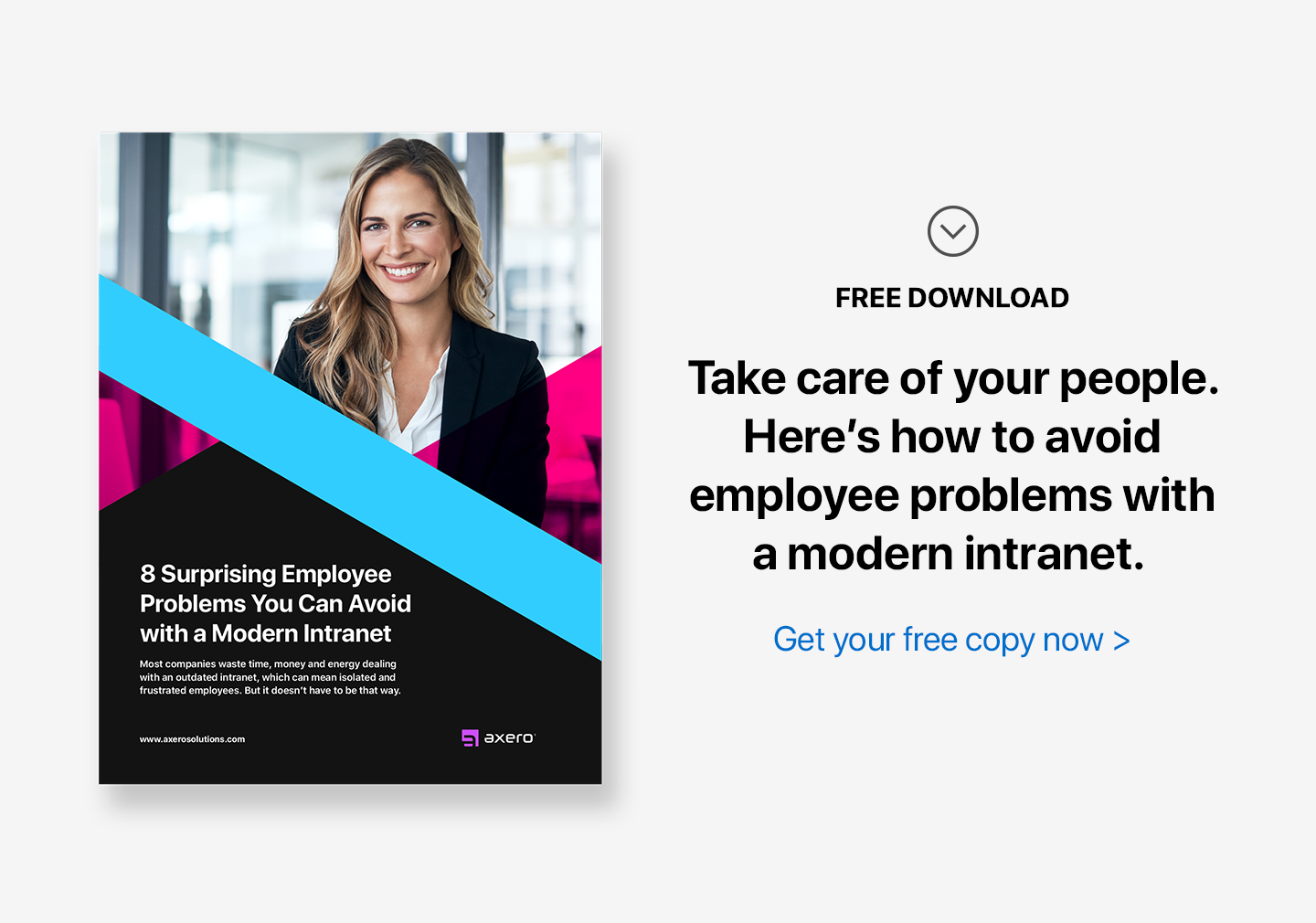Every ship needs a captain, but not every captain deserves a ship. Bad leaders struggle to deliver results to their own higher-ups, while also struggling to engage the employees working under them.
Unfortunately, many of us will have to work under a bad boss at some point in our professional lives. Research has shown that 57% of people have quit a job due to a poor leader, and 14% have even left multiple jobs!
With so many poor leaders among us, we need to be able to recognize the signs of poor leadership, challenge it, and change it – whether this is in our bosses or in ourselves.
What is bad leadership?
Bad leadership happens when a team is not adequately supported in the ways that they need, possibly due to unrealistic expectations or communication breakdowns. This can lead to a variety of results, none of them usually very good, such as:
- Missed deadlines
- High employee turnover
- Low employee and client satisfaction
An organization needs to have strong leadership from its team leaders and middle management if it wants to succeed. This doesn’t just come down to the feel-good factor of a well-supported team; it can have a real and serious impact on a company’s bottom line. According to McKinsey, top-performing middle managers will produce 5x more shareholder value than their average or below-average counterparts over a five-year period.
If a company’s goals and values are getting lost in the rush to complete everyday tasks, and if teams feel neglected and confused, there is a good chance that harmful leadership practices are in play.
What are the qualities of a bad leader?
What is a bad leader? There are many bad leadership qualities that someone could possess – some more destructive than others – and they frequently boil down to how we communicate and collaborate with others.
We all have our own strengths and weaknesses, and they become more apparent when leading others. Knowing how to recognize bad leadership qualities is the first step toward fixing that behavior.
1. No personal integrity
We often ask our managers to lead by example and set expectations for ethical working practices. Unfortunately, this isn’t always the case. Personal integrity usually refers to having a set of strong ethical standards, allowing an individual to develop a reputation as being reliable and trustworthy.
In a work environment, this might also look like how committed someone is to their role, and how visible they are in completing it. While team members don’t always know the ins and outs of everything their manager does, a good leader will put in the effort to ensure that the tasks and impact they deliver are visible to everyone. If your leader seems to push keys at their desk all day, then leaves early to get their bangs trimmed, you might be working under someone with poor personal integrity.
2. Poor performance
Everyone has their own personal targets to meet as part of their role in the organization. Those in leadership positions are not exempt from this, and their own performance may be affected alongside that of the team.
If a leader is putting in unrealistic deadlines or seems hyper-focused on trying to ensure that you get all of your projects across the line, it might not be about your own performance. Instead, they could be attempting to piggyback on your success, or potentially steal some of your glory for themselves.
3. Mr or Ms Know-it-all
We all know how insufferable a know-it-all can be, and it can be even worse in a work setting. When it’s your manager, it can be doubly infuriating. They can come across as superior and unwilling to listen because, obviously, they know exactly what to do, so why should they even ask you for an opinion?
Dealing with ineffective leaders who come across as know-it-alls can be tricky because not many will want to engage with them. Their insistence that things be done a certain way can really hamper productivity across the team (keyword: their).
4. Poor communication
One of the poor leadership qualities that can have a trickling effect across a whole team is poor communication. Good communication skills are a vital part of any team’s dynamic, and if there’s a lack of communication in the workplace—especially from a leader—the rest of the team might struggle to be transparent and work together.
If a leader does not provide their team with space for adequate discussions, such as a casual chat channel for non-business discussions or the right meeting space to talk through important tasks, employees might feel like voicing opinions and concerns will create more issues than solve them.
5. Lack of empathy
96% of employees believe that showing empathy is a key part of employee retention, and yet this is one of the common signs of a poor leader. Some leaders believe that heart-to-hearts and feel-good practices have no benefit in the modern workplace, but they could not be more wrong.
Leaders who equate empathy with weakness can be incredibly difficult to work under. Any concern you might have, great or small, can be swept or explained away. Trying to ask for leeway or support through stressful times can be equally difficult to do.
6. One size does not fit all
A manager may not be a know-it-all, but they could still display a rigid approach to leadership that does not allow for any sort of flexibility. If they preach “My way or the highway” with little consideration to the needs and strengths of their team, they might soon run into issues.
What worked with one team might turn out to be a horrible leadership style for another. A bad leader will never be prepared to listen to another’s point of view, and this could result in a fragmented and stressed team concerned more with appeasing their boss than delivering their targets.
7. No change, no evolution, no growth
If bad leaders aren’t chasing impossible targets, they are more often than not laid back and languishing in their comfort zone. The world of business is dynamic and constantly changing. From new tools hitting the market to knowledge management trends that could shape the businesses of tomorrow, the bad leader will stand resolute against them all.
In doing so, they will refuse and minimize any growth goals the team or company might have set. Say goodbye to any growth or evolution, and say hello to a static business doomed to fall behind its competitors.
8. A lack of direction
The combination of bad leadership and poor communication skills often results in confusion about the direction the team is supposed to be headed in. Every employee should be aware of the overarching goals of the organization and how operations might shift and evolve each quarter, even if they don’t know the specific mechanics of how this is brought about.
With no clear direction from management, chaos will reign. Team members will have no clear idea of what they are supposed to be working towards, and stagnation and employee disengagement can become entrenched.
9. Can’t hold them accountable
Accountability? What’s that? One of the major signs of poor leadership in the workplace is a lack of accountability. A bad leader will refuse to recognize their own faults and errors and will try to evade taking the blame for an issue.
In order to foster a psychologically safe workplace, we need to be free to make mistakes and own up to them. Having a leader who tries to deflect every criticism thrown their way is not conducive to such a workplace.
10. Poor company culture
Finally, is there a good company culture behind everyone? A bad company culture is, unfortunately, only going to produce bad leaders. A company setting should be inclusive and welcoming to all, and this starts with who is hired and who is allowed to shape the culture.
In a toxic work environment, those with toxic traits themselves are going to thrive. This is where “lead by example” can prove to be negative, just as it can be positive on other occasions.
What causes poor leadership?
When considering what is bad leadership, it is vital to remember that many factors feed into leadership skills as a whole. One bad leader may be viewed poorly for very different reasons compared to another.
One leader might be very aggressive and assertive because no one has ever called them out on their behavior. They think that their way is best and might even have been encouraged to ramrod discussions by one of their leaders.
On the other end of the scale, an employee might have been unexpectedly promoted into leadership and then left without support from their own new superiors. They feel a great deal of imposter syndrome, and they second-guess every decision that comes their way. Such behaviors can also be considered to be signs of weak leadership, but they manifest in a completely different manner.
What are bad styles of leadership?
Not all leaders handle things the same, and this is true whether they are considered to be bad or good. In spite of this, there are some common archetypes of bad leaders that we should all watch for.
The Micromanager
They hover over your shoulder and have trouble delegating. A project has to be fully outlined with as much detail as possible, and then the Micromanager still wants to be given updates when each stage is complete. Communication is very one-sided; they tell employees what they want to see and forget about accommodating what might work best for individual team members.
Working for a Micromanager can be exhausting. Employees may feel like they have no breathing space and no chance to work freely, ultimately stifling their creativity and productivity.
The Autocrat
The Autocrat knows best and they are not to be questioned. They will take all of the credit for their team’s hard work, and they only want to celebrate their achievements.
When working under an Autocrat, employees might feel like their voices go unheard. No matter what they contribute, any success at work will be stolen for the Autocrat’s own glory.
The Indecisive
Indecisive leaders really struggle with big decisions. When a deadline is due, or someone needs direction for a brief, or even just when a new tool needs to be set up for the team, you can find the Indecisive umming and erring over what to do.
With an Indecisive leading the team, workers might feel like they never actually progress with their goals. Every step becomes a massive hurdle to cross, and employees will end up frustrated as they wait for a decision to either be forced out of their leader or delegated to them to make.
The Conflict Avoider
The Conflict Avoider is the king of poor conflict resolution; you can’t resolve conflict if you don’t address it in the first place! Some Conflict Avoiders will sidestep the problem and try to get around it by ignoring it; others will flat-out try to avoid it and delegate it.
In doing so, conflicts will never actually be resolved. Though a leader might succeed in other areas, their poor conflict resolution skills could ultimately hinder their team.
The Ghost
Ghosts don’t just avoid conflict – they avoid everything! Everything is left to the employees – from the delegation and completion of tasks to important decision-making!
A team should be trusting and aligned with each other enough that they can work without their leader – but this should only be temporary (like if the leader has to stop early for the day due to a personal emergency) and should not be the normal way of working.
What does good leadership look like?
With all of this discussion on what is bad leadership, we should talk about some of the things great leaders do, too. Though there are just as many good leadership skills as there are bad ones, we often see some of the following qualities in good leaders.
Give autonomy to employees
Employees are trusted to work on their own and meet deadlines that they set. Giving employees the autonomy to set their own diaries and go about tasks in the way that best suits them will boost employee morale and trust.
Recognize achievements
Good leaders spot reasons to celebrate at work and know how to highlight both the big wins and the small ones. A team that celebrates their wins might even have a dedicated channel in their company intranet where they can post their successes for maximum visibility.
Foster open communication
Leaders who have effective communication will always have a head start over those who don’t. They set clear expectations for their employees, but also wish to establish a two-way dialogue to take on their team’s thoughts and opinions. They value their employees’ input and will try to implement their ideas where possible.
Own their decisions
Not every decision is going to result in success. A good leader is going to own their decisions and accept responsibility for any negative repercussions that might follow. Employees feel psychologically safe if they make a mistake as they know their leader has their back should something go wrong.
Create clear paths and guidance
All team members should be aware of organizational goals, and a leader with a clear vision can create the paths they need to follow for the greatest success. They should be happy to discuss these plans with their employees often, whether they simply create an update through internal communication software or create time to discuss personalized development opportunities for each employee.
Nurture self-awareness
Negative leadership behaviors can lead to an inflated sense of importance when, realistically, a good leader needs to be incredibly self-aware. They can then communicate more effectively with their staff members whether they offer support or mediate a dispute.
Show respect
Respect is earned, not given. If employees feel like they aren’t respected by their boss, why should they respect them in return? Effective leaders actively work to establish respect on every level and will see rewards come flooding in when they do.
Give compassion and empathy
Negative leaders with a poor mindset will struggle to show compassion or empathy to a team member who might just need a little extra help. Leaders need to remember that employees have lives beyond the workplace, and this can affect them more than they might let on. A little compassion can go a long way.
Exhibit resilience
Periods of stress can be difficult for staff members to navigate, but they can also be a burden on many leaders. Being resilient in stressful times is very much an underrated skill in leaders, but it can help to uplift teams and boost morale where it otherwise may fall.
Display courage
Being a leader isn’t easy, and there will be many instances where decisions might be difficult or uncomfortable to make. A great leader needs to have the courage to make decisions with confidence and accept whatever consequences come their way.
Break down bad leader habits and foster positive communications across your organization

So much of a poor leadership style is bound up in stilted and confusing communication. A company-wide intranet platform like Axero can break down the walls preventing clear communication and can help leaders and employees alike get on the same page.
Don’t allow bad leadership behaviors to take root in your organization; empower leaders to give lasting and successful support to their teams and mitigate their poor leadership qualities. Effective leadership extends beyond our offices and meeting rooms, shaping our broader culture. Let’s break down bad habits, foster positive communication, and contribute to creating positive workspaces our employees are proud to represent.
The choice is ours, beginning with every decision and interaction—evolving into the leaders our teams truly deserve.
















 info@axerosolutions.com
info@axerosolutions.com 1-855-AXERO-55
1-855-AXERO-55


